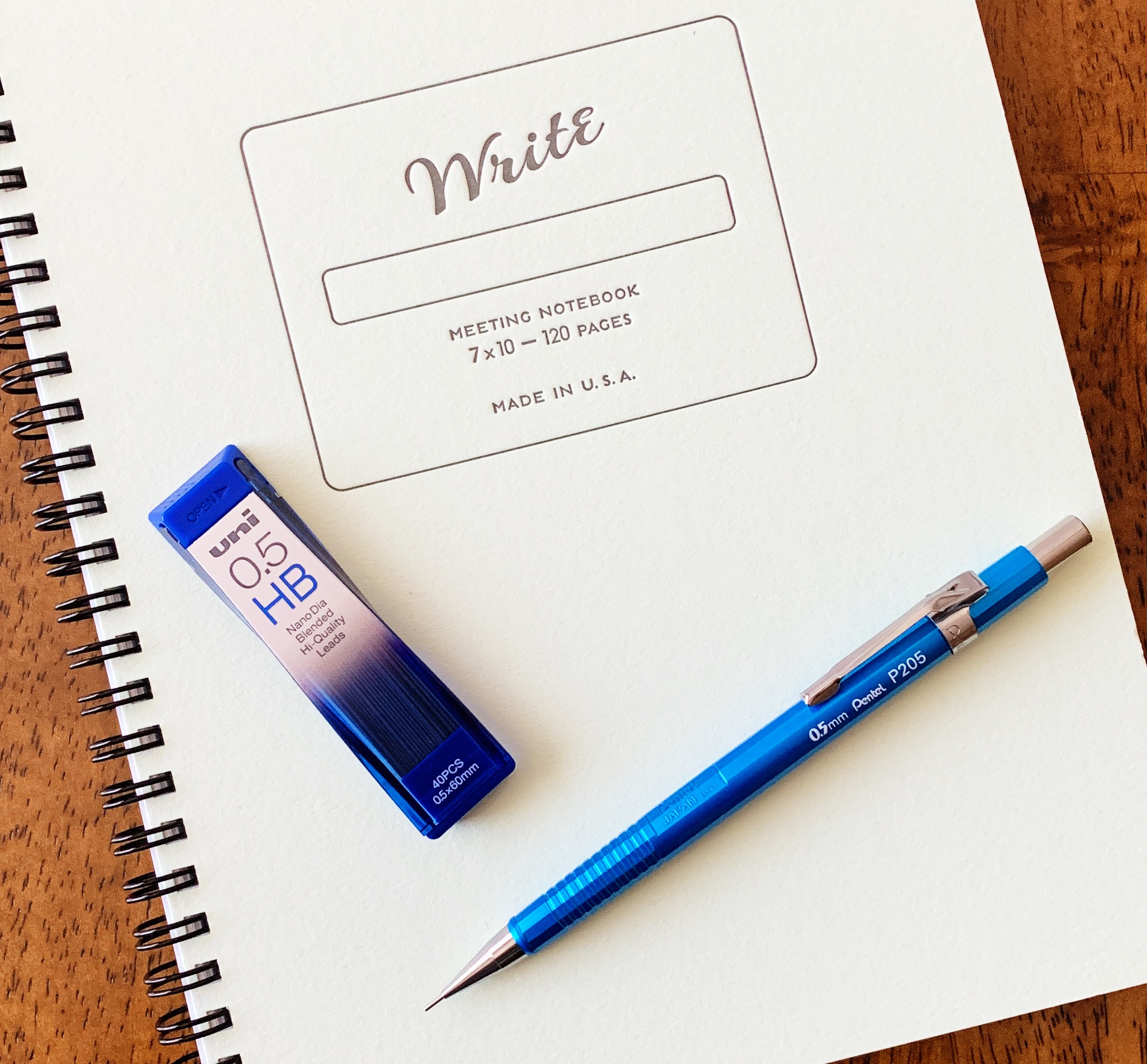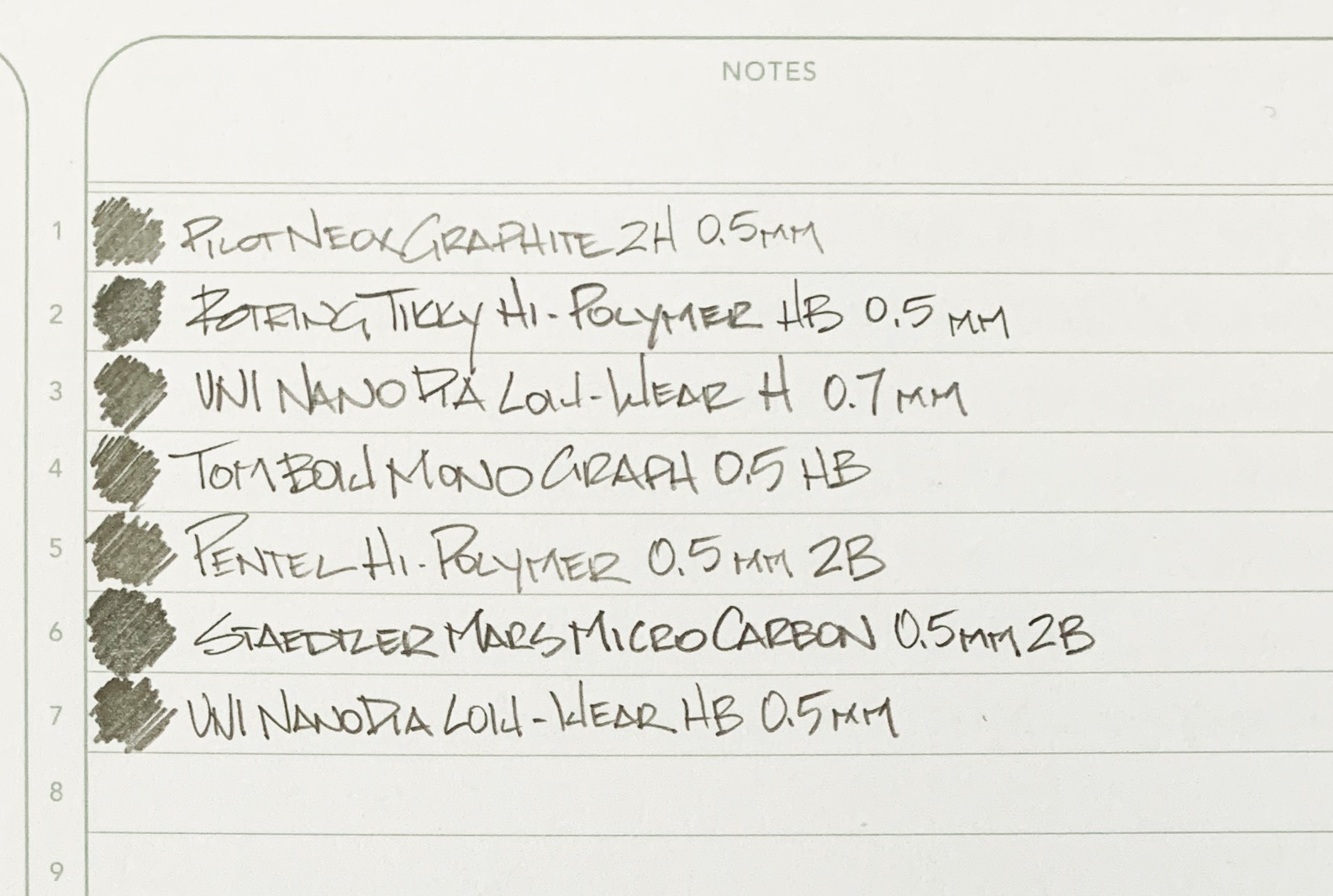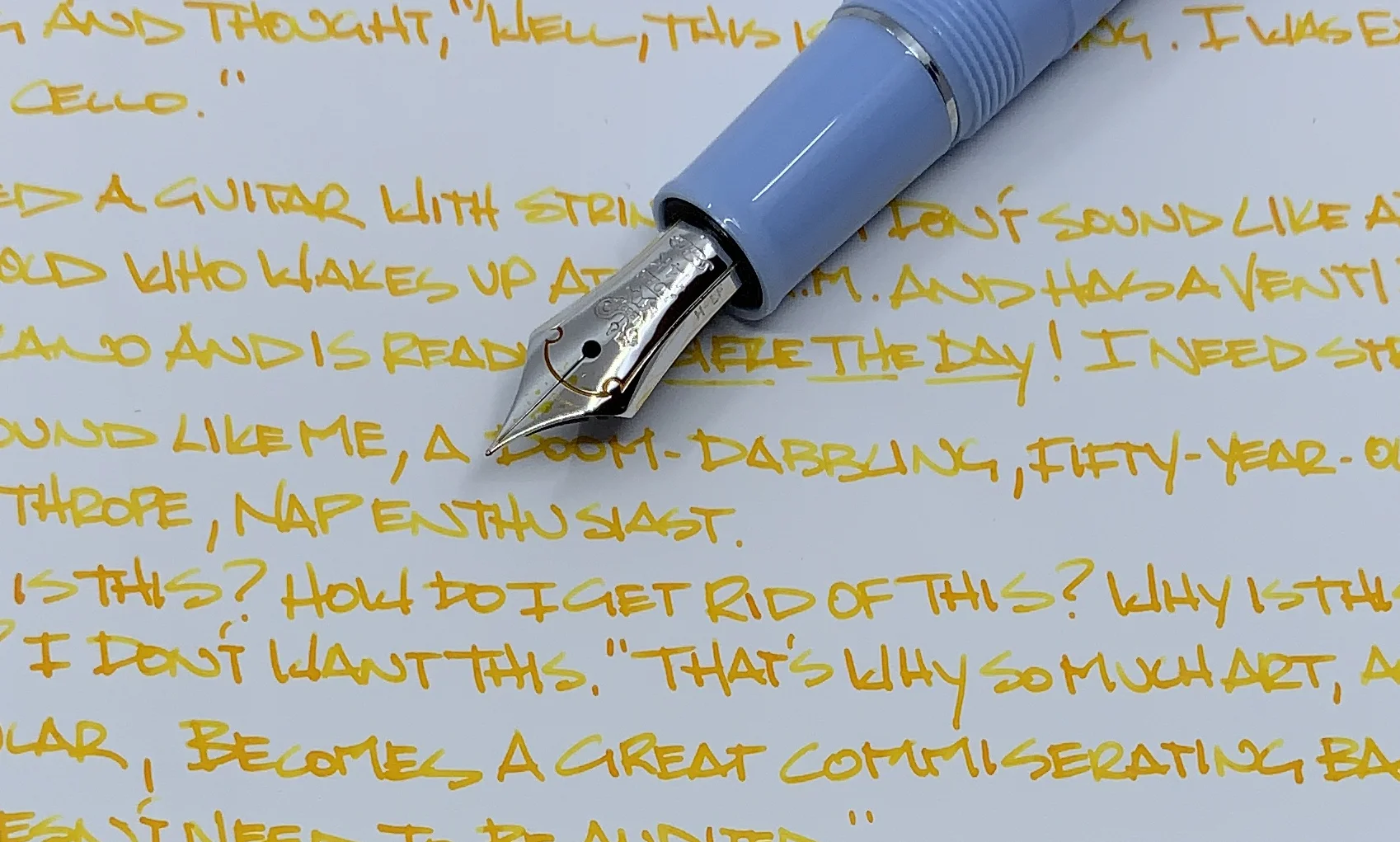I think we are on to something here.
Towards the beginning of this project, I reviewed the 0.7 mm H-grade version of the Uni NanoDia lead. It was good, and I saw why it was popular. It just wasn’t for me specifically. Little did I know that a lead one size and one hardness away from that one might be the one I have been looking for all along.
The Uni NanoDia 0.5 mm HB lead is my favorite lead I have tested so far. Many of you are yelling at me right now saying “We told you so!” But, I’m stubborn. I had to find out for myself. I actively avoided choosing to review it too, knowing that it is one of the more popular leads on the market. It only came up this time because I chose to make a blind choice for this review, reaching into my pouch of 15-plus packs left to review and sticking with whatever came out.
I’m glad this one did. Being 0.5 mm and HB makes this one of the most standard leads on the market. The middle ground, stock lead, if you will - but with added diamond particles for durability! From the moment I loaded it into my Pentel P205 I knew it was going to be good. The darkness was right, and most importantly, the feel was right.
I’ve said in nearly every mechanical pencil lead review I have done that I want the graphite to feel like graphite, not plastic. There has to be feedback and texture. I understand that additives are required due to the fragility of the individual sticks of lead, but they can’t feel fake. This one delivers on that feeling of authenticity.
This is the first lead I have wanted to keep loaded in the pencil after I was done with the review. That surprises me because I thought for sure I would land on the harder end of the graphite scale. And maybe I will as I continue to go through these tests. But until then, the Uni NanoDia 0.5 mm HB is the best lead I have come across.
(JetPens provided this product at no charge to The Pen Addict for review purposes.)
Enjoy reading The Pen Addict? Then consider becoming a member to receive additional weekly content, giveaways, and discounts in The Pen Addict shop. Plus, you support me and the site directly, for which I am very grateful.
Membership starts at just $5/month, with a discounted annual option available. To find out more about membership click here and join us!
















